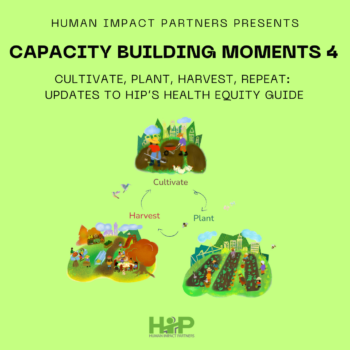| By Sara Satinsky |
Starbucks’ short-lived “Race Together” campaign, in which baristas wrote the phrase on coffee cups, generated lots of conversations – and lots of controversy.
Was it a good idea, but poorly implemented? Did it succeed, however slightly, in nudging the nation to talk about racism? Or was it a marketing move that prompted more talk about Starbucks than racism, and was not grounded in a plan for more significant action?
Whatever you think, it’s an opportunity to reflect and learn. Public health practitioners wrestle continually with this question: Should we talk about racism? If so, how?
In an open letter, Race Forward offers smart ideas on what we can learn from Starbucks’ campaign in the movement for racial justice. Their thoughts, as well as recent conversation with the Public Health and Equity Cohort that HIP has blogged about here, prompted some of my own thoughts, illustrated with examples gathered from public health colleagues.
- Keep the dialogue – it’s how we reach hearts and minds and come to understand our role in serving the public.
Health departments and agencies nationwide are hosting public screenings and conversations around the Raising of America documentary, about how improving the social and economic conditions that shape childhood and childcare can create a safer, healthier, and more equitable future for our nation. The Kansas City, Mo., screening and conversation brought together multiple health departments, an organization that advocates for racial and economic equality, educators, legislators, clergy, and the public. The conversation ended with more than 90 people committing to take action.
- Productive dialogue, particularly between people with different levels of power, is often accompanied by discomfort. But done in a supportive setting, it can be valuable for moving forward.
Since 2005, the Ingham County, Mich., Health Department has hosted Health Equity / Social Justice Workshops that use facilitated dialogue to have structured, strategic conversations among the health workforce and with interested community members. The dialogue builds the capacity of participants to talk about differences like race, class, and gender and their impacts on community health, as well as strategies to engage other individuals on these issues.
- Beyond dialogue are structural solutions that require commitment to a larger, coordinated, long-term strategic plan that involves staff across levels and community partners.
In 2006, the Alameda County, Calif., Public Health Department launched the Place Matters initiative to address the social factors that shape health. As described in Public Health Reports, three factors created a strong foundation for the initiative: senior leadership dedicated to ensuring strong government-community partnerships and to building employees’ skills in advancing health equity; identifying inequities at the neighborhood level; and a strategic plan to achieve health equity that included policy change.
That strong foundation has translated into action. Alameda County Place Matters staff have provided testimony locally to successfully protect tenant housing rights. They have provided findings from data collection and suggested policy solutions to federal agencies, including U.S. Housing and Urban Development and Health and Human Services. And they continue to partner with community organizations to identify policy solutions to persistent problems of landlord retaliation, displacement, and deportation, as well as a lack of affordable housing that force people to live in unsafe and unhealthy housing.
Like Starbucks, public health practitioners are advancing conversations about race – hopefully, in more comprehensive and strategic ways. One place where we agree with the Starbucks campaign is in being impatient. We can’t wait for change.




